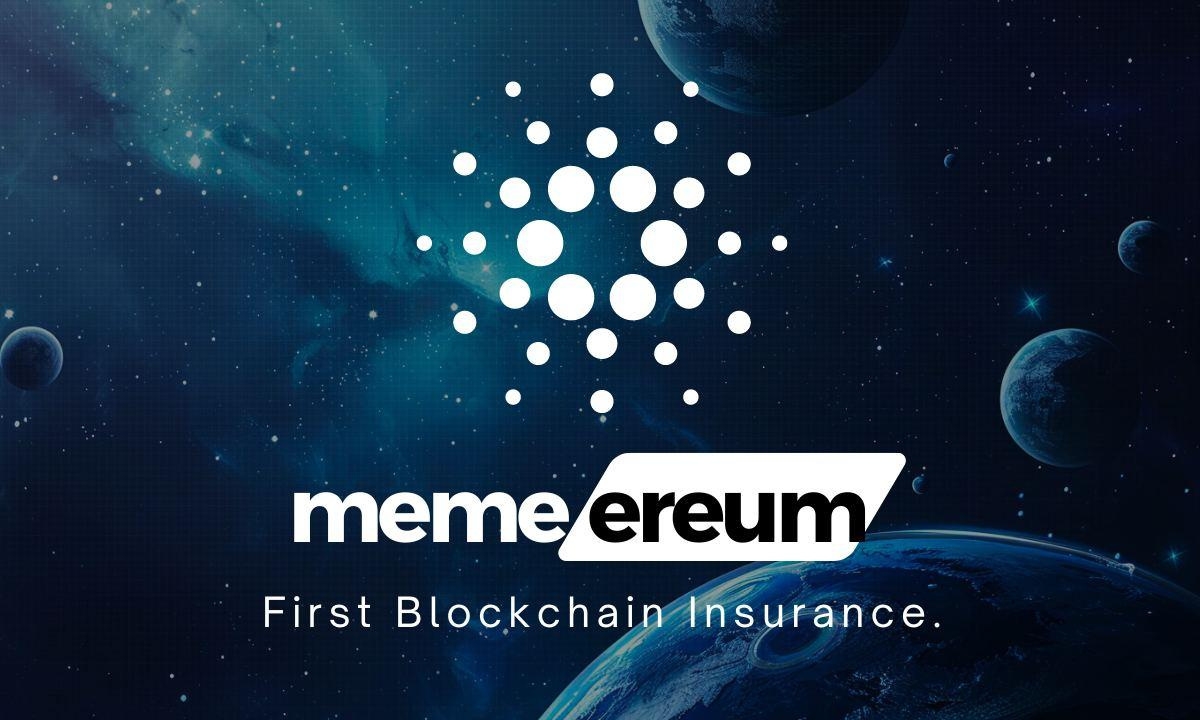Table of Contents
- Expanding DeFi Adoption on the XRP Ledger
- Enhancing User Onboarding with Sponsored Fees
- Leveraging XChainBridge for Cross-Chain Asset Transfers
- Introducing Managed Single Asset Tokenized Pool
- Bridging Traditional Finance with DeFi
- Strategic DeFi Partnerships
- Emerging DeFi Trends on XRPL
- Launching a Stablecoin
Jasmine Cooper, the Head of DeFi Product at Ripple, leads tokenization and DeFi products within RippleX, the team focused on providing infrastructure, tools, services, and programs for developers to enable new crypto use cases on the XRP Ledger (XRPL). Prior to her role at Ripple, Jasmine thrived and built an impressive career in fintech, managing mortgage tech and launching a firm in the financial health space—her depth of experience is undeniable.
In an exclusive interview with Mike Ermolaev, Cooper spoke about Ripple's strategic moves into DeFi territory. Key points included user onboarding, cross-chain interoperability, integration of TradFI with DeFi as well as launching a novel stablecoin and fresh business tie-ups. Powered by GoMining, this conversation is part of the ongoing GoCrypto interview series.
Expanding DeFi Adoption on the XRP Ledger
Asked about Ripple’s strategic plan for expanding DeFi adoption on the XRP Ledger (XRPL), Jasmine Cooper said that it involves leveraging the platform’s inherent strengths and enhancing its capabilities to meet the growing industry demands. Ripple takes advantage of the XRPL’s purpose-built features for value transfer, which have included native payments and decentralized trading functionality since 2012. According to Jasmine, Ripple aims to foster the creation of user-friendly applications that expose the platform's protocol-native features, such as the decentralized exchange (DEX), token minting, payments, and escrow—all aimed at reaching a wider audience.
"To further bolster the XRPL's DeFi capabilities, Ripple and other community developers are actively designing new features that extend the original feature set. These include an AMM expansion of the order-book DEX, native price oracle support, metadata-inclusive semi-fungible tokens, and a highly modular protocol-native lending protocol. By integrating these features seamlessly with the XRPL's high speed and cost-efficiency (trades execute for a fraction of a penny), Ripple seeks to provide developers and users with the essential primitives of decentralized finance within a secure, durable, and battle-tested blockchain," Jasmine explained.
Recognizing the importance of interoperability and scalability in driving widespread DeFi adoption, Ripple has partnered with Peersyst to develop a Cosmos-SDK-based sidechain with EVM compatibility via EVMos. This ensures seamless access to the XRPL's features while enabling interoperability with other blockchain ecosystems. Additionally, Ripple's partnership with Axelar Foundation aims to enhance the XRPL's interoperability across a diverse range of blockchain networks. Axelar's network, which connects over 55 blockchains, will further broaden the XRPL's utility and reach, enabling developers to build cross-chain dApps and facilitate secure asset transfers across connected blockchains.
"As the future of blockchain technology becomes increasingly multi-chain, Ripple's focus on interoperability and the XRPL's ability to process transactions at incredible speeds and low costs position it as a key player in the growing DeFi landscape. The integration of Axelar network with the XRPL marks a significant milestone in the evolution of blockchain interoperability and utility, opening up new pathways for innovation and driving forward a more interconnected blockchain ecosystem," Jasmine added.
Enhancing User Onboarding with Sponsored Fees
Regarding the proposal for sponsored fees and reserves through relayed transactions, Jasmine outlined how this innovation aims to enhance the onboarding process.
"The proposal for sponsored fees and reserves through relayed transactions offers a more flexible approach to account reserves. Instead of providing XRP for reserves for free as a gift, which can be exploited, this proposal allows for these reserves to be treated as a loan for the duration of their use. Currently, giving away account reserves is vulnerable to abuse, as individuals can create accounts to receive the 10 XRP reserve, then delete the account and reclaim 8 XRP, essentially receiving free funds. The same risk applies to object reserves. Our proposal addresses this issue by ensuring that the 8 XRP return to the project, eliminating the potential for such exploitation," she said.
Jasmine added, "The generosity of the sponsor is safeguarded against abuse on-chain, as each use of the sponsorship must be approved by the sponsor. The primary risk of abuse we foresee is if the sponsor requests the return of their reserve and the sponsee is either unwilling or unable to repay it, particularly if they lack sufficient XRP to cover the reserve. This scenario could present some challenges, but overall, the measures in place significantly mitigate the risk of abuse while enhancing the onboarding experience."
Leveraging XChainBridge for Cross-Chain Asset Transfers
Ripple plans to leverage the XChainBridge technology to facilitate cross-chain asset transfers and enhance interoperability between the XRPL and EVM-compatible sidechains.
"The XChainBridge is a proposed amendment that aims to facilitate cross-chain asset transfers and enhance interoperability between the XRPL and other blockchain networks, such as EVM-compatible sidechains. The specific details of its implementation and the role of (w)XRP are still under exploration. We will be unveiling more information on the XChainBridge's capabilities and the role of (w)XRP during APEX," Jasmine stated.
Introducing Managed Single Asset Tokenized Pool
Regarding the Managed Single Asset Tokenized Pool proposal, Jasmine described it as an ERC-4626 inspired asset vault built natively on XRPL. This feature enables the lockup of a single asset in a pool while tracking the ownership shares of liquidity providers, making it ideal for use cases like lending, staking, and escrow.
"The Managed Single Asset Tokenized Pool proposal, referred to as XLS-65d, is an ERC-4626 inspired asset vault, built natively on XRPL. This feature enables the lockup of a single asset in a pool while tracking the ownership shares of liquidity providers, allowing for redemptions, or even minting another asset, making it ideal for use cases like lending, staking, and escrow," she explained.
"Administration of this feature can be handled by a delegate account through the protocol’s management functions. The Pool Delegate role is central to the administration, ensuring efficient and secure management of the pool. While XLS-65d provides the foundational framework, its implementation in lending protocols, such as XLS-66d, introduces specific security measures to align the delegate's incentives with those of the pool investors, such as first-loss capital," Jasmine said.
She added that although the protocol offers the necessary tools and options to ensure safety and compliance, the ultimate responsibility for the security and efficacy of the activities provided by their applications rests with the developers.
Bridging Traditional Finance with DeFi
Jasmine noted the advantages DeFi has over TradFi, such as transparency, accessibility, rapid settlement, and 24/7 runtime.
"These advantages are primarily technological. TradFi still has value in the areas of trust, customer relationships, regulatory compliance, access to capital, etc. By joining forces and bringing together these two different approaches to finance, we can create a significantly upleveled, more powerful financial system for all," she said.
She provided examples such as large private equity firms using lending protocols like XLS-66d to aggregate capital on-chain, lowering operational costs and reaching a wider investor base.
“On the investor side, they now gain access to what was previously a highly coveted asset class, available only to large endowments and ultra high net worth. It is a win-win,” Jasmine explained.
Additionally, she mentioned tokenized treasury bills that are becoming increasingly valuable as more capital moves on-chain, providing returns on idle capital with the low cost and low latency of the XRPL.
Strategic DeFi Partnerships
Jasmine highlighted several strategic partnerships that are significantly bolstering DeFi development on the XRPL, including Zoniqx, Axelar, and Orchestra.
"Zoniqx plays a crucial role by streamlining the tokenization of real-world assets (RWA) on the XRPL, facilitating the creation of tokenized assets such as bonds, treasuries, and other financial instruments. This partnership will enhance liquidity, speed up settlement times, and reduce transaction costs, making the XRPL beneficial for traditional financial institutions seeking to integrate blockchain technology," she explained.
Meanwhile, Axelar’s integration with the XRPL brings unparalleled cross-chain interoperability, connecting the XRPL to over 55 other blockchains, according to Jasmine.
"This seamless cross-chain communication and asset transfer capability greatly enhance the flexibility and utility of the XRPL for DeFi applications. By enabling interactions with a broad array of blockchain ecosystems, Axelar ensures that the XRPL remains a versatile and interconnected platform, capable of supporting a wide range of DeFi activities," she continued.
Orchestra Finance is leveraging the XRPL’s native automated market maker capability to bring high-speed, low-cost DEX trading, staking, and more to the platform.
"They are continuing to iterate and expand on their dApp to deliver high quality permissionless DeFi to users on XRPL," Jasmine noted,
adding that more partnerships will be revealed in the coming months, specifically at the upcoming XRP Ledger Apex event on June 11-13.
Emerging DeFi Trends on XRPL
Jasmine highlighted several emerging DeFi trends that could shape the future development of decentralized finance on the XRP Ledger. According to her, one key trend is the increasing traction in on-chain Real World Assets, particularly Treasury bills (T-bills).
"As traditional financial services become tokenized, the XRPL's fast, low-cost transactions and robust security make it ideal for trading assets like T-bills on-chain. Ripple, alongside the XRPL community, are working on enhancing the XRPL infrastructure to integrate seamlessly with traditional financial systems, improving liquidity and accessibility," she explained.
"Increased interoperability is also crucial. Ripple's partnership with Axelar connects the XRPL to over 55 other blockchains, facilitating seamless cross-chain communication and asset transfers. This ensures the XRPL remains versatile and integrated within the broader blockchain ecosystem," Jasmine added.
Overall, it appears that Ripple is preparing to accommodate these emerging trends by enhancing the XRPL's infrastructure, increasing interoperability, and developing advanced DeFi protocols to meet the needs of institutional finance.
Launching a Stablecoin
Jasmine also discussed the timeline for Ripple's stablecoin launch and how the company plans to differentiate its US dollar-backed digital currency from major competitors like Tether and Circle.
According to her, Ripple aims to “bring stability and legitimacy with a compliance-first mindset”, making it the ideal player to launch a stablecoin pegged to the USD on the XRP Ledger and Ethereum.
"We expect the Ripple stablecoin to be used in institutional and DeFi use cases as well as in our payments solution," Jasmine said.
"We’re continuing to evolve the payments product and building toward a future where Ripple Payments is the fastest and most efficient cross-border payment solution for businesses, regardless of the currency, time of day or end destination – without needing to be an expert in crypto and blockchain," she added.
According to her, the company plans to pair the Ripple stablecoin with XRP to enable more crypto liquidity for additional cross-border payments demand, which in turn will enable critical on/off ramps and support global scale
Jasmine mentioned, "We will utilize a wide range of asset options – crypto, stablecoins, fiat, or a combination of assets – to provide customers with the best payment experience taking into account the region, time constraints, and associated fees."
"For example, if you’re using a G7 currency, fiat or a stablecoin might be the most appropriate. But if you need to send money outside of traditional work hours, or Ramadan or Christmas morning – using crypto will get your money to its desired destination instantly and at low cost.
We have started testing stablecoins for select customers in the payments flow and may introduce others based on need / customer interest. Overtime, as there is more liquidity and assets supported on XRPL, we anticipate being able to directly tap into the DEX with our cross-border payments product Ripple Payments, to transform how cross-border payments are executed today – significantly reducing cost and speed of transactions," she concluded.
Disclaimer: This article is provided for informational purposes only. It is not offered or intended to be used as legal, tax, investment, financial, or other advice.
Investment Disclaimer










